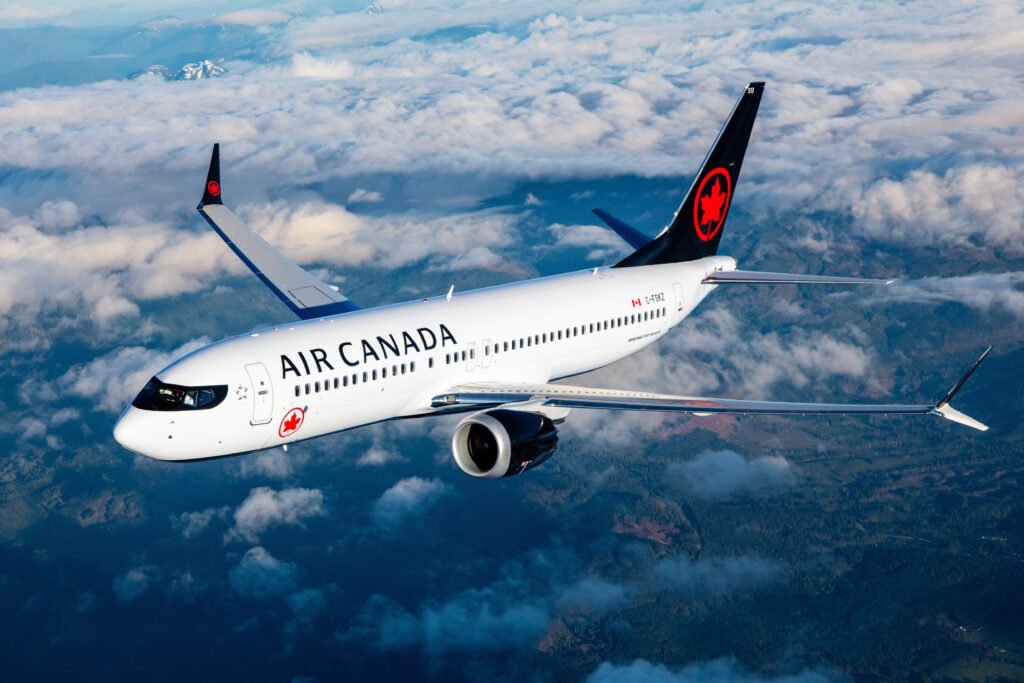Air Canada has once again proven that its growth strategy in North America is not about chasing headlines but about building a stronger, smarter network. The airline has announced three new routes to the United States that will take flight in May 2026, further cementing its role as a key player in cross-border aviation. While the additions may not be massive in scale, they highlight Air Canada’s careful balance between demand, profitability, and long-term vision.
With new services linking Toronto to San Antonio and Montreal to both Cleveland and Columbus, the airline is creating connections that serve leisure travelers, corporate flyers, and international passengers alike. These new flights will not only strengthen Air Canada’s position in the transborder market but also feed traffic into its hubs, ensuring smoother onward connections to destinations across Canada, Europe, and beyond.
This expansion illustrates Air Canada’s consistent approach in recent years: adding capacity with discipline, selecting markets with promise, and deploying the right aircraft for the mission.
A Closer Look at the New Routes
Starting May 1, 2026, Air Canada will bring three new links into its transborder portfolio:]
| Route | Start Date | Frequency | Aircraft | Seats | Key Market Focu |
|---|---|---|---|---|---|
| Toronto (YYZ) – San Antonio (SAT) | May 1, 2026 | 3x weekly | Airbus A220 | ~137 | Leisure & Business |
| Montreal (YUL) – Cleveland (CLE) | May 1, 2026 | Daily | Embraer E175 | 76 | Corporate & VFR |
| Montreal (YUL) – Columbus (CMH) | May 1, 2026 | Daily | Embraer E175 | 76 | Corporate & VFR |
Starting May 1, 2026, Air Canada will bring three new links into its transborder portfolio.
The first is a Toronto Pearson International Airport (YYZ) to San Antonio International Airport (SAT) route, operated three times per week. This marks the airline’s first-ever service into San Antonio, opening a fresh Texas destination for Canadian travelers. The flight will be flown with the Airbus A220, which features around 137 seats. Known for its modern design, fuel efficiency, and passenger comfort, the A220 is perfectly suited to this medium-demand market. It offers enough capacity to serve both leisure and business passengers, while maintaining the cost discipline that Air Canada values in long-and-thin routes.
The other two additions focus on Ohio, where Air Canada will introduce daily flights from Montréal–Trudeau International Airport (YUL) to Cleveland Hopkins International Airport (CLE) and John Glenn Columbus International Airport (CMH). Both routes will be operated with the Embraer E175, a 76-seat regional jet that has long been a workhorse for markets where demand is steady but not overwhelming. By selecting the E175, Air Canada avoids the risk of flooding the market with excess capacity, instead tailoring supply to match realistic traffic expectations.
Combined, these three routes add roughly 1,475 weekly seats to Air Canada’s cross-border network. The scale may appear modest, but it reflects the airline’s preference for steady, strategic growth over short-term capacity dumps.
Why These Cities Were Chosen
Each of the three markets carries its own strategic value within Air Canada’s broader network.
- San Antonio is a city with deep historical and cultural significance, attracting tourists throughout the year. At the same time, it is home to a growing business community, particularly in industries like health care, cybersecurity, and the military sector. For Canadians, San Antonio provides a warm-weather leisure option, while Texan business travelers gain a direct link into Toronto and beyond.
- Cleveland and Columbus strengthen Montreal’s presence in Ohio, a state with significant corporate activity and stable visiting-friends-and-relatives (VFR) demand. By offering daily service, Air Canada makes itself a reliable choice for corporate passengers who need predictable schedules and premium-class options. These markets also generate valuable feeder traffic into Montreal’s transatlantic flights, helping to sustain international connections to Europe.
What unites all three routes is their connectivity design. Air Canada has structured schedules to integrate seamlessly into its hub banks at Toronto and Montreal. Passengers arriving from Texas or Ohio will find it easy to connect to Europe, Asia, or Canada’s west coast, thanks to coordinated timing. This connectivity advantage helps Air Canada stand out from US competitors, which often focus more on domestic point-to-point traffic.
Disciplined Growth in Action
Perhaps the most striking element of this expansion is the way it embodies Air Canada’s disciplined approach to growth. Instead of chasing rapid expansion or adding capacity to already crowded markets, the airline is targeting measured opportunities.
The Airbus A220 and Embraer E175 play central roles in this strategy. Both aircraft are efficient, right-sized, and flexible. They allow Air Canada to launch new routes without the financial risk of deploying larger jets. The A220, in particular, has become a cornerstone of Air Canada’s fleet modernization, offering improved fuel efficiency, passenger comfort, and operational range.
This focus on efficiency also ensures that Air Canada remains competitive on cost per available seat mile (CASM), an important metric in today’s volatile industry. More importantly, it prevents overexposure in markets that may be seasonal or still maturing. The airline is effectively testing demand while keeping its risk profile low.
By growing carefully, Air Canada can protect yields, maintain sustainable load factors, and adjust quickly if market conditions shift. This flexibility is what makes its expansion plan stand out in an industry where aggressive growth often backfires.
Benefits for Travelers
For passengers, the new routes offer tangible improvements in choice, convenience, and connectivity.
- Canadian travelers now gain direct access to San Antonio, cutting travel time and avoiding the need for inconvenient connections through US hubs.
- Texan travelers gain a direct link to Toronto, with easy onward connections to Europe and Asia.
- Ohio travelers benefit from direct service to Montreal, which not only provides access to Canada but also smooth connections into Air Canada’s extensive transatlantic network.
For both business and leisure travelers, these routes enhance flexibility and open new opportunities. Business passengers enjoy the reliability of daily flights and premium seating options, while leisure passengers gain access to culturally rich and diverse destinations.
Strengthening Air Canada’s Market Position
These additions also reinforce Air Canada’s status as a legacy carrier with the ability to grow intelligently in the transborder space. While major US carriers like United, Delta, and American maintain strong presences between the US and Canada, Air Canada leverages its hub structure differently. By anchoring flights in Toronto and Montreal, it ensures that passengers are not just flying between two cities but are seamlessly linked into a global network.
This is where Air Canada’s competitive edge shines: it can attract travelers who might otherwise choose US carriers by offering a smoother, one-stop journey to destinations across Europe, Asia, and Canada’s own domestic network.
Looking Ahead
Air Canada’s May 2026 expansion may look small compared to headline-making route launches elsewhere in the world, but it is a strategic move with outsized importance. These routes are not just about adding destinations; they are about reinforcing the airline’s identity as a disciplined, globally connected carrier.
Risks do exist. Demand fluctuations in Ohio’s corporate travel market, seasonal peaks and troughs in San Antonio leisure traffic, and competitive responses from rivals could all affect performance. Yet Air Canada’s careful deployment of efficient aircraft and its connectivity-driven approach provide a strong foundation for success.
Looking forward, travelers can expect Air Canada to continue with this model: identifying strategic markets, launching service with right-sized aircraft, and using its hubs to maximize network value.
Conclusion
The launch of new routes from Toronto to San Antonio and from Montreal to Cleveland and Columbus in May 2026 is a clear demonstration of Air Canada’s network strategy at work. This expansion is not about aggressive growth for its own sake; it is about building smart, sustainable connections that benefit both the airline and its passengers.
By selecting efficient aircraft like the Airbus A220 and Embraer E175, aligning schedules with international banks, and targeting markets that balance leisure and business demand, Air Canada is strengthening its role as a leading cross-border airline.
For passengers, this means greater convenience, more flexibility, and smoother journeys between the United States and Canada. For Air Canada, it represents another step forward in building a network that grows with purpose, connects with precision, and positions the airline for long-term success in the competitive transborder market.


